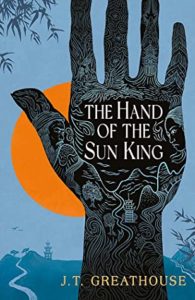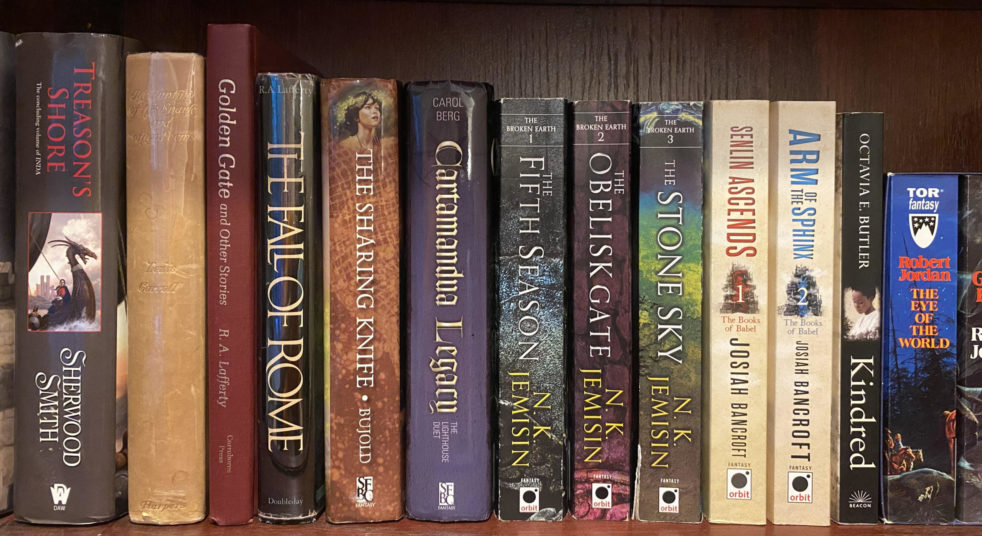
J.T. Greathouse’s debut novel The Hand of the Sun King may have flown under the radar when it was released last year, but what it lacked in quantity of readers, it made up for in quality of reviews. Almost everything I saw about this book praised it to high heaven, with recommendations from several prolific reviewers and BSFA Award nomination to its name. So when it became the subject of an online book club, I decided to take the plunge and give it a try.
The Hand of the Sun King is told in first-person from the perspective of Wen Alder, the son of a man of the Chinese-coded Sienese Empire and a woman from the conquered island people of Nayen. But while Alder’s mother may have chosen assimilation, his grandmother and uncle remain part of a resistance, keeping native magic alive while trying to strike against their conquerors whenever possible. This leaves Alder torn between two sides of the family, with his father’s side promising advancement in society and magical training, and his mother’s family encouraging a dangerous and uncertain rebellion.
The Hand of the Sun King is split into four sections, which serve as distinct arcs in the overall tale, starting with Alder’s childhood and examination and then moving forward into his training and professional work. Each has the feel of a miniature novel, starting slowly and building tension until it reaches a high-stakes conclusion that’s impossible to put down. And with each section clocking in under 100 pages, the reader is never far away from another round of excitement.
Each arc is well-done in its own right, and each fits nicely into the logical progression of the novel. But the overall story has the feeling of inevitability—it may be the coming-of-age of a man pulled between two worlds, but it’s no mystery which side will ultimately win his heart. This robs the overarching story of a bit of tension, even as the smaller arcs maintain theirs. The bigger story still works, but the storytelling has to be exemplary to carry a novel that’s not out to keep the reader guessing, and the storytelling here is merely quite good. The prose is strong, there’s lots of exploration of empire and resistance, and the character progression makes a ton of sense (and if the lead goes through periods of unlikability, well, that’s to be expected under the circumstances). But while all of those elements come together to make for a good story, none of them stands out to the point such as to make it a must-read.
This does open a duology, so there’s plenty left to do at the end, but it does a nice job of closing intermediate arcs in a way to deliver a satisfying climax, even though there’s clearly more story to tell. It’s precisely the sort of ending you want to see in the first book of an epic fantasy, closing a book that should satisfy fans of single-perspective epic fantasy.
Recommended if you like: single-POV epic fantasy, non-Western worlds, interrogation of empire.
Can I use it for Bingo? It’s hard mode for Shapeshifters, Family Matters, Author Using Initials, Award Finalist, and arguably Revolutions and Rebellions (and if you don’t buy the argument, it definitely fits regular mode).
Overall rating: 15 of Tar Vol’s 20. Four stars on Goodreads.
